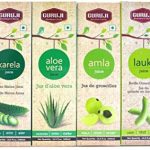
Keto Diets & Building Muscle Mass
Can You Build Muscle on a Keto Diet?
Here are the best practices in building muscle on a keto diet.
You might think that muscles are only important for aesthetics, but there are actually health benefits to having more muscle tissue in your body! In this article, we explain why muscle tissue is more beneficial than other types of tissues in the body, and we provide tips for how you can build more muscles with low-carb and keto food products, along with the right types of exercise.
Disclaimer: The information in this article is not intended to replace personalized medical advice. A keto diet may not be suitable for you. Consult your health care provider before making any changes to your lifestyle or use this information at your own risk.
Why is Muscle Tissue so Important?
The plain and simple answer is that our bodies need muscle to survive. Did you remember that your heart is a muscle? The heart, of course, is one of the strongest muscles in our body. It ensures that our whole body receives all of its necessary blood and oxygen. And our other muscles enable us to move and exercise, which are crucial parts of our lives. They also play a large role in our metabolism, weight management, bone strength, and resistance to stress and disease.
Metabolism and Body Weight
Muscle tissues burn up to three times more calories than fat tissue, even at rest. Many people try to achieve a caloric deficit when they want to lose weight, which is when you consume less calories than your body burns. If you want to determine how many calories a day you should be consuming, it is important to take into account the amount of exercise you get in a day as well as your body’s resting metabolic rate – and this is where muscle tissue comes in. You will naturally have a higher basal metabolic rate (BMR) if you have more muscle tissue in your body. This can place you at a more comfortable target caloric intake without feeling restricted.
Muscle mass can also help protect against metabolic syndrome and diabetes. A lack of muscle mass or inadequate muscle quality has been strongly linked to diabetes. This is because muscles play a role in insulin sensitivity by protecting against insulin resistance. When we consume carbohydrates, glucose molecules are stored in our muscles and are readily available to use for energy any time we need to move. This promotes healthy metabolism of carbohydrates. On the other hand, glucose that gets stored in fat tissue isn’t as easily converted into energy, which can result in insulin resistance (a type of metabolic syndrome) and diabetes. Therefore, the less muscle mass and more fat tissue you have, the more likely you are to develop insulin resistance, and thus diabetes.
To make matters worse, obesity (which can sometimes go hand in hand with diabetes) triggers inflammation in the body, which causes our muscles to break down. Muscle loss can make it harder to move, promoting a more sedentary lifestyle. A lack of exercise then further accelerates weight gain and more muscle loss. As you can see, this is a vicious cycle that must be paid attention to. If you are overweight, talk to your doctor about a weight loss program that can work for you. And, prioritize building muscle to help stop this dangerous loop.
Bone Strength
This correlation between muscle mass and bone strength may not seem obvious. However, our bones are basically encased in muscles and other tissues. In order to move, the bones must bear the weight of these tissues. It takes considerable strength to lift, carry, drag or move something under a heavy load. So, the best way to build strong bones (apart from eating the right nutrients) is by placing them under substantial weight. The exercises you perform to build your muscles will also play a role in strengthening your bones. This can become especially important in old age, as our bones tend to lose density and become more prone to breaking.
Stress and Disease Prevention
Muscles create additional stores of protein that the body can draw on in times of increased need, such as when we are stressed or sick. Protein is the main structural component of your body, making up everything from your bones, muscles, organs, blood cells, enzymes and hormones. When we become stressed or sick, this can cause deterioration or damage to these components of our bodies. Muscle mass allows the body to more easily replenish and repair these cells. Think of them like health insurance; an emergency store of nutrients that can keep you and your body healthy and recover more quickly from unexpected stressors! Diet alone can rarely deliver the required level of protein that your body needs during these times, so it is really important to have an adequate reserve of muscle mass.
How to Build More Muscle
Diet
To build muscles – which are made of protein – you must consume an adequate amount of protein (20-25% of your daily calories). You also need to consume the right amount of calories in a day; an extreme caloric deficit can actually destroy muscle mass. If you are also trying to lose weight, a slight deficit might be okay because the body can still use energy from stores of fat in your body to make muscles. That said, if you do not have a lot of excess weight, make sure you are eating enough every day (check your BMR here and factor in how many calories your burn from exercise in a typical day, as well) . A slight caloric surplus is recommended in order to gain muscle mass – but make sure you are eating healthy foods to provide the right kind of extra fuel for your body!
Here are some substances that help you build muscle tissue:
- Whey Protein
Milk contains two types of proteins; casein and whey. Whey protein is often separated and used for improving strength because of its unique properties. It contains a range of essential amino acids (which are required for building proteins) and is absorbed quickly by the body. For those who have a lactose sensitivity or intolerance, whey may still be a safe option as it contains small amounts of lactose (especially whey protein isolate).
Check out The Low Carb Grocery’s selection of whey protein powders and snacks!
- Collagen
Collagen is found in your muscles, bones, joints, tendons, ligaments, hair, nails and skin. It is the main structural protein of connective tissue, making it the most abundant type of protein in your body. We all lose collagen as we age, which is why some people may take collagen supplements to improve the appearance of their skin, hair and nails as they get older. But aside from its beauty-promoting benefits, it is also a key protein for healthy maintenance of bones and other important structures in the body. That said, it is not a perfect replacement for other types of protein, rather a great supplement to take to promote anti-aging along with other protein sources in the diet.
Collagen peptides are the easiest form of collagen to digest, so you will often find these in the supplement aisle at your local store. The most common forms are sourced from animals or fish. However, if you are vegan or vegetarian there are plant-based options, too!
- Fish Oil
This one might seem a little strange, but fish oil is recommended for building muscle because it contains powerful omega-3 fatty acids that can help strengthen muscles. Specifically, the EPA and DHA types of omega-3 fatty acids found in fish oil are responsible for these effects. EPA and DHA have been shown to reduce muscle soreness after workouts, improve endurance, help you burn fat, and aid in range of motion. The point here is that omega-3s are incredibly important for overall strength and vitality to support healthy muscles! You can either take a fish oil supplement, or regularly include fatty fish (i.e. wild caught salmon, mackerel and sardines) in your diet.
Grass-fed beef also contains high amounts of omega-3s as well as pasture/farm-raised poultry, eggs and other meats. Note that plant sources of omega-3 fatty acids (such as nuts, seeds, and algae) only provide ALA omega-3s, which are compositionally different and not as beneficial for the body.
- Magnesium
Magnesium won’t build muscle in the short term, but it is an important nutrient for long-term muscle growth and strength. This is because it plays a role in blood glucose control, which can prevent metabolic syndromes like insulin resistance that block muscle growth. It also helps balance and control stress hormones, which, as we mentioned previously, can break down muscles if released in excess. Magnesium may also provide more energy to support your workouts and help prevent muscle soreness afterwards for a speedy recovery. The type of magnesium that is best absorbed by the body is magnesium chloride. Magnesium citrate is also used for relaxation and recovery purposes. However, it is good to get dietary sources of magnesium as well, which can be found in things like pumpkin seeds, nuts, soy, raw cacao (found in 70%+ dark chocolate), leafy green vegetables, seaweed, and whole grains.
- Lean Meat
Of course, we can’t talk about consuming protein and not mention lean meats! Lean meat is one of the densest sources of protein and heme iron necessary for muscle growth, so it is always a good choice if you are looking to build muscle. That said, be sure to choose the right kinds of meat, as many processed meats and poorly raised animals can contribute to inflammation in the body, which breaks down muscles. Choose grass-fed and farm or pasture raised meat for the best quality and highest amount of nutrients. As mentioned previously, these meats also tend to be higher in omega-3 fatty acids which are beneficial for overall health and muscle performance.
- Pastured Eggs
Finally, eggs from pasture-raised chickens are another great source of protein and essential amino acids (as well as many other nutrients). You can also look for omega-3 enriched eggs for an extra boost of muscle-building nutrients. Additionally, eggs are naturally rich in healthy fats which can promote weight management and help reduce fat tissue in the body that detracts from muscle ability.
Exercise
Unfortunately, muscle is a use-it-or-lose-it kind of tissue. So, it is important to do regular strength training, especially as we get older. As we age, many people tend to stop exercising, yet this is the worst time to stop being active as this is when we are at the highest risk for muscle loss! Starting around age 50, the amount and quality of our muscles start to decline. As the body’s metabolism changes, it begins to sacrifice things like muscle proteins in order to keep the heart and other vital organs functioning optimally. We must show our bodies that our muscles are worth having by using them regularly. And by eating right as we age, we provide our bodies with the necessary energy to keep our muscles strong.
Weightlifting is probably the first type of exercise to come to mind when you think of building muscle. That is because it is the most effective exercise for increasing muscle mass! Basically, when you lift weights, it creates tiny tears in the muscle fibres. Your muscles then repair these micro tears, which causes them to grow and get stronger. Weightlifting might feel intimidating if you have never done any kind of strength training, but many studies have shown that it is both safe and effective, even in older adults. It is especially beneficial when practiced consistently for at least one year. You don’t have to do dead lifts off the bat – even something as simple as purchasing a couple of dumbbells and doing a few reps of bicep curls every day or every other day is a great exercise (remember to allow your muscles time to repair!). You can gradually increase the weight as you feel comfortable to do so. Ideally, by the end of your reps you should feel like you can’t do one more, but you are not exhausted or in intolerable pain.
You can also do bodyweight exercises – these are easy, fun and require no equipment at all! This might include things like push ups, sit ups, planks, lunges and pull ups. There are plenty of videos and courses online that involve these kinds of workouts. Aim for at least 15-20 minutes of day of these kinds of exercises. This is another safe and effective way to work out all parts of the body, especially the core.
Aerobic exercise is another way to build muscle, although it is not as effective as the other exercise methods we mentioned. The word aerobic means “with oxygen.” So, aerobic exercise refers to things like walking, running, swimming and cycling that get the heart rate up to distribute more oxygen to the body. These involve repetitive motions of the large muscles, which can keep these muscles healthy and strong over the long-term. The key here is doing these exercises for long periods of time, as this promotes muscle strength and endurance. Aerobic exercise may be more comfortable for those just starting out their muscle building journey and those older in age. It is also a great way to achieve both fat loss and muscle strength.
Get Started Today
We hope this article helped you picked up some key takeaways for building muscle on a low-carb or keto diet. As you can see, there’s still no way around building muscle besides great quality foods and proteins and exercise. But, we hope some of our recommendation can at least make it easier – or better yet, more fun!
If you want to continue this conversation with us or our thousands of followers, please consider joining our communities on Facebook or Instagram. We also love to hear your personal feedback with a Google Review. Also, if you’re looking for the most up to date low-carb and keto news, plus sales on your favorite low-carb and sugar-free products, please consider subscribing to our weekly newsletter.






